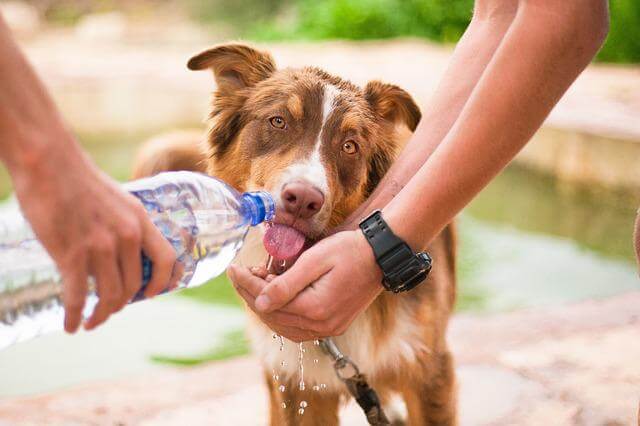Heat Stroke in Dogs - Signs, Treatment & Prevention
20.06.2022.
Heat stroke or heat exhaustion in dogs is most commonly known as an elevated dog body temperature or hyperthermia. Humans use sweat to eliminate heat, while dogs use panting. When they cannot cool down by panting, the dog's body temperature will rise, and the dog can exhibit heat stroke. This is a severe health condition, and you must do everything you can to prevent heat stroke from happening. Stay with us, and you will find out how you can notice early signs and symptoms of heat stroke in dogs and how you can help your dog.
What is heatstroke?
Heatstroke can happen very fast and without any warnings. Most dogs experience heat stroke because of the careless owners who often leave their dogs in hot cars on hot summer days. A dog's body temperature that exceeds 103°F (39.4°C) will be considered abnormal. If your dog's body temperature rises above 106°F (41°C), your dog will experience heat stroke. The most critical temperature where the organ failure and death can occur is between 107°F to 109°F (41.2°C to 42.7°C).
RELATED: Dog Panting - All You Need To Know
Signs of heat stroke in dogs
This is a life-threatening condition, and you must act fast. A few early signs can help you take care of this condition before it gets too severe.

Early signs of a heat stroke in dogs are:
- Dry mouth
- Excessive drooling
- Sticky gums
- Abnormal gum color
- The dog may appear lethargic
- Skin hot to the touch
By noticing these signs, you will be one step ahead; you can help your dog and possibly save his life.
RELATED: Ways to Check if It’s Too Hot to Walk Your Dog
Treatment
Heat stroke in dogs is a medical emergency, and you must act very fast and reduce the dog's body temperature. You must pour cool water over the dog's head, feet, and stomach or apply cold compresses to the mentioned areas. You must ensure airflow or take him to a ventilated place to further help your dog.
The main goal should be to get to the vet clinics or animal hospital as soon as possible.

Our vet had a significant statement that she wants every dog owner to know.
"If your dog is experiencing heat stroke, you must carefully monitor its temperature and not allow the dog's temperature to fall below 103ºF (39.4ºC). Cooling the dog must be discontinued; otherwise, the dog could develop another dangerous condition – hypothermia (low body temperature)."
How will the vet treat my dog?
For most dogs, fluid therapy is most commonly used to treat dogs with heat stroke. They will replace their fluids and minerals. Your vet must monitor your dog's overall health for any signs of organ damage, changes in blood pressure, or neurologic symptoms.
RELATED: Dehydration in Dogs - Signs & Prevention
What is a prognosis?
The prognosis of heat stroke will depend on many different factors. You should consider how long the body temperature was high, how long it took for the dog to receive proper medical attention, and the dog's breed, age, and physical condition before heat stroke.
If your dog didn't experience too high a temperature and receives immediate medical attention, your dog will, in most cases, recover without any damage.

Some dogs could experience organ damage or even death a few days later due to the complication if the heat stroke didn't get treated the right way.
RELATED: The Best Dog Water Fountains
How to prevent heat stroke in dogs?
Prevention is the best thing you can do for heat stroke. You must be very careful during hot summer days. You should NEVER leave a dog in a car without the AC. Avoid walking your dog during the hottest part of the day. You should always seek shades and grass and avoid walking with your dog on concrete. Your dog should always have access to fresh and cold water.
Conclusion
Heat stroke in dogs is a severe health problem, so you must approach it responsibly. If your dog shows early signs of heat stroke, you should cool the dog down and get to the vet clinic as soon as possible. Most dogs will recover completely and will not have any damage. Remember that prevention is the best when it comes to heat strokes.
World Dog Finder team







Share